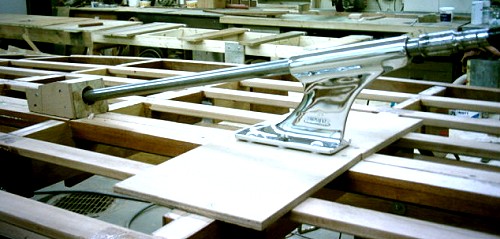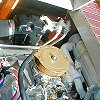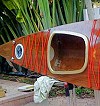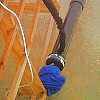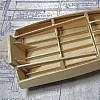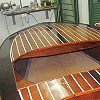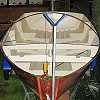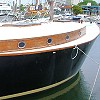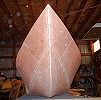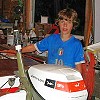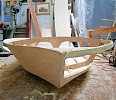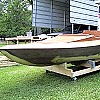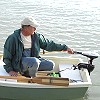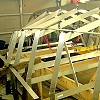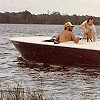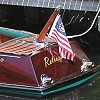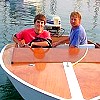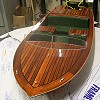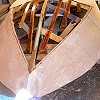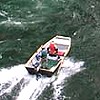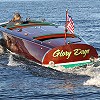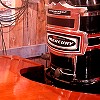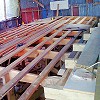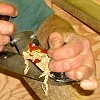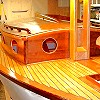

A place to share YOUR boat building story
Glen-L Marine Designs - 9152 Rosecrans Ave. - Bellflower, CA 90706
 In this issue
In this issue
-
Beware of Hitch-Hikers
-
Glen-L Boatbuilder of the
Month
-
Building the True Grit by Ray
Macke
-
Designer's Notebook: Drilling
the Shaft Hole for an Inboard
-
The Mussels are Coming, The Mussels are
Coming by ArtDeco
-
Photos posted since the last
WebLetter...
-
West Coast Rendezvous of Glen-L Boatbuilders is Almost Here!
-
Shop Talk: Rip Sandpaper with
Precision
-
Recent email
-
Tool Usage
Dictionary
GLEN-L Update
Now that the holidays are behind us we're back with a new and (we hope) exciting WebLetter for you! We hope that you'll enjoy and maybe even learn something new by looking over this issue, and that many of you will be encouraged to come join us at the West Coast Rendezvous taking place in California this coming May.
Thanks to the tremendous contributions made by quite a few of our builders, Glen has in this issue written a very detailed and informative "Designer's Notebook" column on how to drill an accurate and effective Shaft Hole for your inboard design.
Of course, once again ArtDeco has written a very entertaining poem about a "muss-cular" subject that could affect us all. And Ray Macke has submitted another fabulous story of his boating and boatbuilding exploits.
Please continue to send in your emails, letters, stories, and photos to share with all of our readers so that every WebLetter will have something in it for everyone.
Until next month . . .
Editor
Beware of (These) Hitch-Hikers
DREISSENA BUGENSIS, DREISSENA
POLYMORPHA
(SAY THAT 3 TIMES FAST!)
Dreissena bugensis, better known as
Quagga mussels, and Dreissena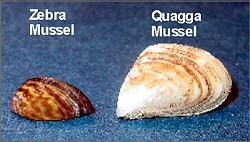 polymorpha (a.k.a Zebra mussels) are destructive invasive
aquatic species that grow to about an inch in diameter.
Sometimes they are larger, sometimes they are microscopic.
These small, freshwater bivalve mollusks are triangular with
a ridge between the side and bottom. They have black, cream
or white bands, and often feature dark rings on the shell
almost like stripes.
polymorpha (a.k.a Zebra mussels) are destructive invasive
aquatic species that grow to about an inch in diameter.
Sometimes they are larger, sometimes they are microscopic.
These small, freshwater bivalve mollusks are triangular with
a ridge between the side and bottom. They have black, cream
or white bands, and often feature dark rings on the shell
almost like stripes.
Zebra and Quagga mussels are native to the Ukraine and
Russia. Zebra mussels were first discovered in the Great
Lakes in 1988, and a year later, Quagga mussels were
discovered in the same area. It is believed they arrived in
America via ballast water discharge.
Quagga/Zebra mussels can colonize on hulls, engines and
steering components of boats, other recreational equipment
and if left unchecked, can damage boat motors and restrict
cooling.
These hitch-hikers pose serious risks and costs to you as a
boat owner because they can:
Glen-L Boatbuilder of the Month
James Logan - Starpath 44
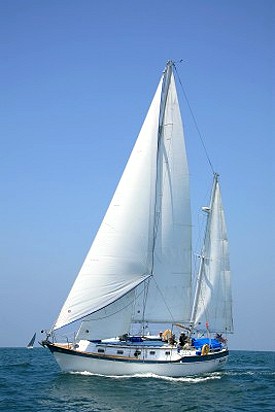 The SPIRIT, a Starpath 44, was completed and launched
in 2006.
The SPIRIT, a Starpath 44, was completed and launched
in 2006.
The vessel has been a great success. I am very pleased with
her performance under sail. We have had a chance to sail her
under light to moderate conditions up to 25 knots of wind and
are very satisfied.
The attached picture of SPIRIT under sail was taken
on August 16, 2009 about 2 miles offshore from Point Loma,
San Diego, California. She was doing 5 knots at about 40
degrees off the wind. Wind was about 10 knots. We were
running about 1200 square feet of sail.
Construction Photos
Project Registry
A Visit with James Logan before SPIRIT'S
Launch
Building the True Grit
by Ray Macke
Chapter 13 - Prep and Painting
Although my True Grit construction plan was to work
only during the cold winter months, the summer of 2009
brought about a bit of reality. All the main structure was
complete and interior work could begin. But I recognized
there were numerous items that needed to be completed for
work to progress in an orderly fashion. Things like through
the hulls for the bilge pumps, gas tank fills and water tank
fills needed to be added while they were easily accessible
from the interior. If I waited they would be inside cabinets
and much harder to reach. But their install would be much
cleaner if the exterior was painted as it eliminates masking
and time spent trying to paint around them. So it seemed
painting the exterior was next on a long but shrinking list of
things to do.
But this is where reality started to disrupt my building
plan. My large but totally un-insulated shop is not easy to
heat during the winter and holding the needed temperature for
painting would be a problem. I decided the only solution was
to have the painting completed by late fall. This meant I
would have to work through the summer to get it done. Not
what I had planned as when the weather is warm I would rather
be boating, riding my motorcycle or anything outdoors. Not
working in the shop. But if I were to wait for winter to
begin the process several months would be lost waiting for
mild enough spring weather.
And so it began. Building a 27’ boat is a substantial
undertaking but it tends to grow slowly and the dimensions
become somewhat muted. But the true size of the beast
suddenly becomes apparent when you start sanding. And
sanding. And sanding.
Designer's Notebook: Drilling the Shaft Hole for an Inboard
|
The Mussels are Coming, The Mussels are ComingNasty critters in our watersOnly fresh waters but beware They're coming and spreading You had better take care The name sounds strange Dreissena Bugensis That's the Quagga mussel And there're no defenses Dresissnena Polymorpha Is that pesky Zebra mussel That little bugger's giving me A real pain in my bustle Their habits are bad They eat up the food That all small fish eat And that isn't good They grow in big clumps On motors and pipes Clogging and choking And blocking, Yipes! Some states and counties Are doing their best To prevent the spread Of these two little pests Be ready for inspections The standards are high To launch, your boat must Be clean, drained and dry It's a hassle for sure and Of course, it's not free The launch fees are doubled That's really bugging me So take note, my friend Unless your boat's been traded Watch out for the mussels Cause we're being invaded! -ArtDeco |
Photos posted since the last WebLetter... |
West Coast Rendezvous of Glen-L Boatbuilders
Join us for another get-together organized by the members of the Glen-L Boatbuilder Forum. Bring your boat whether you built it yourself, or it's in process or even a manufactured boat. The more the merrier!
So far, we have people bringing the following boats:
- Monaco
- Wee Hunk
- Flying Saucer
- 1919 Navy Launch
- A-Lure
- 2 Zip Runabouts
- Squirt
To learn more or just join in the coversation visit the Glen-L Boatbuilder Forum
West Coast Rendezvous of Glen-L Boatbuilders
Sunday, May 2, 2010
Sugar Barge Resort & Marina
1440 Sugar Barge Road
Bethel Island, California
 |
Shop Talk: Rip Sandpaper to Size with Precision
Building a boat incorporates lots of curves, some of which may require some sanding. To help use expensive sandpaper efficiently, you can build this fixture, which will allow you to rip sandpaper sheets to any size quickly and easily, with little waste.
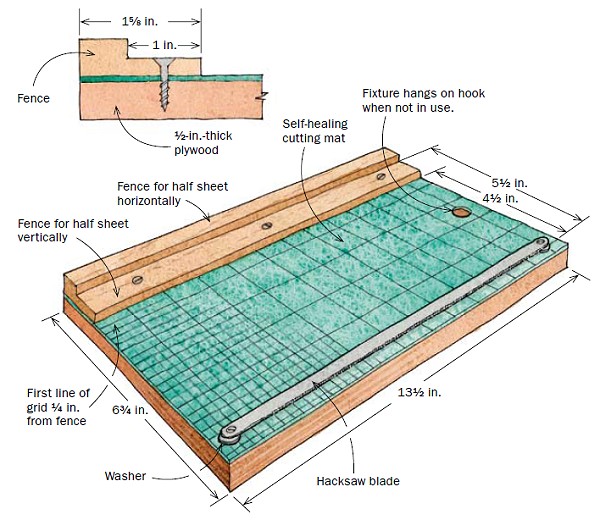
You may find this to be one of the most frequently used fixtures in your workshop. Michael Fortune, of Lakefield, Ontario, Canada is on his second - the first one gave out after 30 years of use.
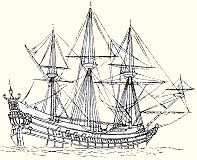
Recent email:
Subject: It Floats!
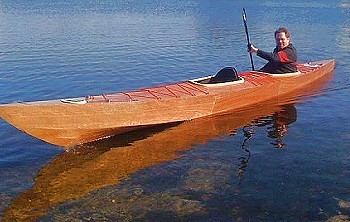 I just finished building your Sea Kayak Two and good news, it
floats!
I just finished building your Sea Kayak Two and good news, it
floats!
It was my first time working with the "stitch and glue" method of
construction and by the end of the project, it was a
snap!
Thanks for the great plans and I am in receipt of your Lo Voltage plans for my next build.
-- Aaron Pufal
Plantation, Florida
Subject: Zip in Brazil
Thanks.
-- Amaurí Cascapera
Sao Paulo, Brazil
Subject: It's Never Too Late
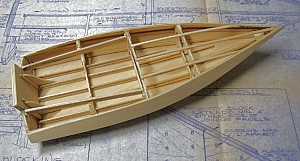 I bought these plans from you in
the 80's and finally built your Class AB boat.
I bought these plans from you in
the 80's and finally built your Class AB boat.
I actually built it as a model in 1:12 scale and it a good
learning experience for when I finally build the full size
boat.
-- Tom Wysocki
Subject: WebLetter 118
I was very pleased to see my golden prose published for all to see in your new newsletter (ZIP-Builder's Diary). Congrats on putting it together so handsomely. The little bit of editing you did was certainly understandable.Your web site is really quite good - lots of depth and content, but still easy to navigate. As a former computer geek I can appreciate a good site like yours. It's good to know there's a resource like you guys out there.
-- Dave Coleman
Castro Valley, California
Subject: Thanks!
I purchased plans from you for the Sweet Caroline around 1990...built it...registered it in Massachusetts in 1994...it has been the best ever since!Sank in a hurricane...survived...has taken my daughters and now my grand children up harbor every year...
Thank you for providing me with the detailed instructions to build this incredible boat. It has been moored in Nantucket harbor for 14 going on 15 years.
Yes. It has totally changed my life...as anyone else will acknowledge who has built their dream. I thank you forever! Always!
-- Charles Dunton
Nantucket, Massaachusetts
Subject: Squirt
I just thought I would just send you some more pictures from another satisfied customer. As a teenager, I purchased my first boat which happened to be a Glen-L Flying Saucer. I outfitted it with a 1967 33hp Evinrude Ski Twin and had endless enjoyment with my buddies learning to waterski and just plain messing around at Elk Lake near Victoria, British Columbia.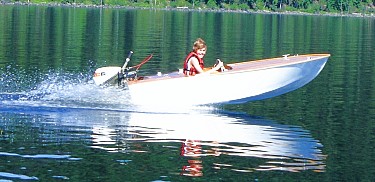 Now
that I am a father, I decided to try and give my son the same
experience. We purchased plans to your Squirt design a couple of Christmases ago
and built her over the winter in the garage. We rebuilt an old
seized 1973 9.5hp Johnson outboard for power and launched her at
Canim Lake in the interior of British Columbia, where she still
resides today.
Now
that I am a father, I decided to try and give my son the same
experience. We purchased plans to your Squirt design a couple of Christmases ago
and built her over the winter in the garage. We rebuilt an old
seized 1973 9.5hp Johnson outboard for power and launched her at
Canim Lake in the interior of British Columbia, where she still
resides today.I have attached a few pictures to illustrate the final product. As you can see from the expressions on my son's face, the project was a great success!
Thanks again,
-- Bruce Richmond
North Saanich, British Columbia, Canada
Subject: Barrelback 19' Project
George and I began building the Barrelback back in December of 2007. We discussed starting with a smaller plywood construction boat to gain some building experience first, but decided to jump right in and build the boat we both wanted.Building goes in spurts as we generally only work on it weekends during the winter months after the hunting season ends in November. After the holidays, most every Saturday and Sunday we work on it together while the wives are busy playing Scrabble and drinking wine in front of the fire.
So far we are about 80% finished fairing and hope to start the Cold-Mold planking in about two weeks. Our goal for this winter is to complete the outside of the hull so we can flip it by time the boating season begins here in May. We are planning on using a 4.3 Liter V6 for power.
George and I are both very interested in speaking with others who are either building or have built the Barrelback as we have many questions. We also have learned many things that might be helpful to others.
-- Mike Clem & George Portfleet
Grand Rapids, Michigan
Subject: A Winner!
A stretched (21 ft) Tahoe completed in July of '07. Entered in Traverse City Michigan Boat Show and the Hessel, Michigan boat show 1 week later. Won best contemporary classic in Traverse and second place contemporary classic in Hessel.
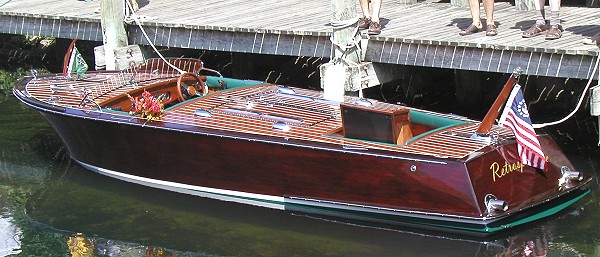
Where do I go from here?
-- Lee Rea
Lowell, Michigan
Tool Usage Dictionary
|
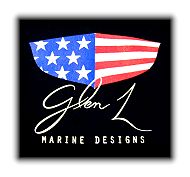
GLEN-L boats, of course
